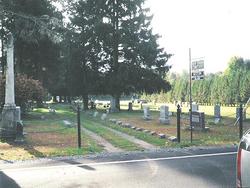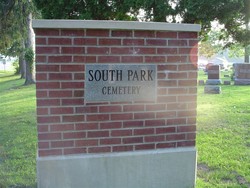© Gary Carner. Copyright Protected. All rights reserved
What did the week bring about regarding Pepper Adams? Two significant developments and another possible one. First, was the receipt of an audience tape from Dave Schiff. It's a performance from June 21, 1974 of Pepper with Roland Hanna and several students at the Wilmington Music School in Wilmington, Delaware. (Another CD, from either 1968 or 1969 with Thad Jones, is forthcoming!) Adams and Hanna perform Thad Jones' "Quiet Lady" and Adams' "Civilization and Its Discontents" in a quartet and quintet format respectively to begin the concert. This is the only known time that Adams and Hanna performed these tunes apart from their recording of them on Adams' masterpiece LP, Ephemera, recorded the year before. "Civ" also has Schiff playing the melody on flute, which I believe was unknowingly a dry run for the Bill Perkins recording of the tune four years later.
Two other tunes on the audience tape, "Straight, No Chaser" and "Royal Garden Blues," follow more of a jam session format, giving some the Camp's students a chance to show what they learned that week. It's possible that trombonist Wayne Andre was on the faculty and on the recording. I'll need to listen again, but not in my car, so I can finally make sense of some of these things.
I also had a email conversation with Schiff this week regarding his recording of "Civ" and my plans for the CD reissue of Ephemera. It turns out that Schiff recorded "Civ" as a tribute to Pepper, not knowing the title of the tune. His rendition will be added to pepperadams.com soon so you can hear his arrangement.
As for the reissue, an engineer friend of mine in Los Angeles, Jim Merod, is about to do post-mastering work on the date to try to improve the sound of the piano and to increase the volume of Mel Lewis' drums-- especially his brushwork on "Quiet Lady," that remains virtually inaudible. For his part, Schiff is also considering whether he can produce the reissue on his label. We may decide to do a modest Kickstarter campaign to pay for the first round of CDs. I hope we can rely on you, my faithful readers, to help with this project. Although Ephemera is one of Pepper's greatest recorded achievements, it's never been issued on CD!
As for the reissue, an engineer friend of mine in Los Angeles, Jim Merod, is about to do post-mastering work on the date to try to improve the sound of the piano and to increase the volume of Mel Lewis' drums-- especially his brushwork on "Quiet Lady," that remains virtually inaudible. For his part, Schiff is also considering whether he can produce the reissue on his label. We may decide to do a modest Kickstarter campaign to pay for the first round of CDs. I hope we can rely on you, my faithful readers, to help with this project. Although Ephemera is one of Pepper's greatest recorded achievements, it's never been issued on CD!
Otherwise, I've been working with Jocelyn Ireland, a librarian in Utica, New York, and a genealogist colleague of hers, Keith Gerland, to try to make some sense out of the allegation that Pepper lived in Utica from the Summer of 1935 until the Summer of 1937. I was first given an anonymous tip about it in an unsigned email. (Who was that "masked man?") So far, however, nothing has turned up in the 1935 Utica city directory or any census information. I'm awaiting word as to whether there were 1936 or 1937 directories for Utica and if anything turns up.
This from Ireland: "You mentioned doing a search for the family in Rome. We don't have any of their directories but I think Ancestry.com may have some digitized. I'll have to check if they have Rome, NY around 1933-34. There is also the possibility the family stayed with Park F. Adams' parents in Oriskany, NY. I believe Oriskany may have been listed in Utica City Directories in the 1930s -- another thing I'll have to check. . . . I will check if there was any Adams in Oriskany, NY and if Rome's directory is on Ancestry.com."
Jocelyn has been great thus far. From what I gather, Pepper Adams and his mother moved to Rome in the Summer of 1934 to reunify with Pepper's father after a three-year separation due to the lack of work during the worst of the Great Depression. They lived in Rome at 806 Jerris or Jervis Avenue from that summer until the Christmas holiday, when they moved to Rochester. They may have lived briefly in Oriskany with family, a small town between Rome and Utica, while searching for a place to live.
Jocelyn also found these links for grave sites, two with obituary information:
Grave and obituary of Pepper's father, Park Frederick Adams:
http://www.findagrave.com/cgi-bin/fg.cgi?page=gr&GRid=12500616&ref=acom
|
| |||||||||||||||||||||||||||
Grave and obituary of Pepper's paternal grandmother, Frances Cleveland Adams:
http://www.findagrave.com/cgi-bin/fg.cgi?page=gr&GRid=12500616&ref=acom
| Birth: | 1863 Mohawk Herkimer County New York, USA |
| Death: | Jan. 26, 1940 Los Angeles Los Angeles County California, USA |
Rome Sentinel January 27, 1940 Mrs. Frances Cleveland Adams, widow of Nathaniel Quicny Adams, a former resident of Rome and Oriskany, died Friday at a hospital in Los Angeles, California. She had gone to California a year ago last November to make her home with her daughters. She was born in Mohawk, a daughter of Abel B. and Abbie J. Cleveland. About 62 years ago she was married to Mr. Adams who died about 10 years ago. Her married life was spent in New London, Churchville and Rome before coming to Oriskany 25 years ago. For a number of years, the Adams operated the Temperance Hotel, S. James St., Rome. Mrs. Adams was a member of First Methodist Church, Rome, and later of Waterbury Memorial Presbyterian Church, Oriskany. She was a member of Queen Esther Rebekah Lodge, Rome. She was also a member of the Maccabees and served through the offices, the organization later becoming the Women's Benefit Association. She was also a member of Oriskany Chapter 524, OES and had served as chaplain and in other offices. Survivors are three daughters, Mrs. Fred R. Weaver and Mrs. Roy H. Johnston, both of West Los Angeles, California, and Mrs. Rita Head or Oriskany, a sister, Mrs. Emma Callahan, Rome, seven grandchildren, including Francis Head, Rome and Mrs. Lee Kite, Lowell, and five great-grandchildren. | |
Grave of Pepper's mother, Cleo Coyle Adams:
http://www.findagrave.com/cgi-bin/fg.cgi?page=gr&GRid=27629332&ref=acom
|
| ||||||||||||||||||||||||||
Obviously, I now have a whole new world of research to pursue regarding Pepper's ancestors. I'll let you know of my progress. I did do a search regarding the Coyles. So far, it seems that Pepper's mother is the only child of Charles (1869-1916) and Minnie B Coyle (1872-1941). I'm trying to determine if/how Eloise Coyle was related. She lived in Columbia City, Indiana (in Whitley County) in 1935 (just after Adams and his mother left for New York), and was married, as of the 1940 U.S. Census, to Carl Banning (born c. 1920). Her age makes her a possible first-cousin.
















